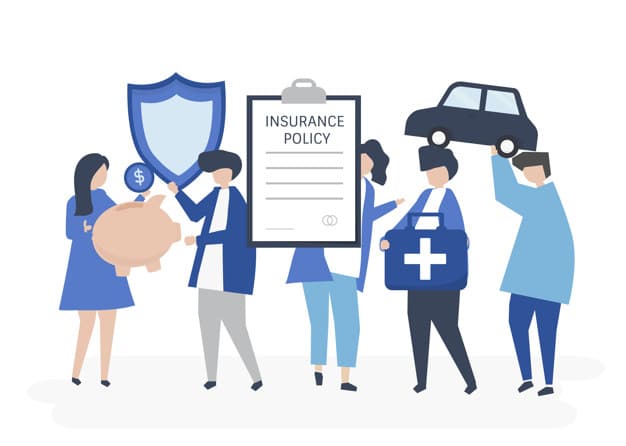
What Are Comprehensive Insurance Verifications? Why Is It Important for Medical Offices?
Maximum reimbursement is important for medical practices to strengthen their bottom line. When benefit information is not verified prior to services it leads to claim denials and delays, and loss of revenue. Patient eligibility verification is a key component of revenue cycle management.
Insurance Eligibility Verifications
Overview
“Insurance verification refers to checking the patient’s insurance coverage and benefits prior to date of service to ensure payment for services.”
With proper verification, providers can check whether the patient’s insurance is active, premiums are paid, services are covered and deductibles are met, well before providing treatments.
It is also known as
- Verifying patient’s insurance benefits and out of pocket costs
- Eligibility checks
- Comprehensive insurance verifications
- Benefit verifications
- Verifying coverage levels
- Patient benefit verification
- Eligibility verification
- Insurance eligibility verification
- Insurance benefit verification
- Patient eligibility verification
- Health insurance verification
Why is Insurance Eligibility Verification Important for a Medical Office?
To collect patient payments, it is important for physicians to understand their current coverage details, verify and communicate their benefits to them, and collect payments that are due when services are provided. Patient eligibility verification helps medical offices with accurate claim submission.
When Should It Be Done?
Coverage and eligibility benefits should be verified prior to the patient appointment.
Who Does it in a Medical Office?
In most medical offices, verification is the responsibility of the front office. Most specialties now outsource their verification tasks to experienced, HIPAA-compliant insurance verification companies. This will free up their staff’s time and help physicians reduce their administrative costs.
What Are the Benefits of Obtaining Insurance Verifications Before the Point of Service?
Proper eligibility verification is important for medical offices to
Ensure proper medical coding and billing
With proper verification of benefits and claim submission requirements, practices can also save days in accounts receivable and hours of follow-up chasing payments.
What Information Can Be Verified When Checking Eligibility?
Details verified include the following:
ID number
How Is Insurance Eligibility Verified?
Once the details are verified, the insurance verification service provider will contact the insurance company to confirm that the patient is eligible for the services.
The insurance verification process involves the following:-

Patient Registration and Scheduling

Patient Enrollment



1.Patient Registration and Scheduling
The patient makes an appointment with the doctor. Registration will be done either online or at the medical office.
2.Patient Enrollment


3.Benefit Verification and Authorization
Getting Authorizations
Obtain authorization for treatment, as certain medical treatments need to be approved or pre-certified prior to being provided.
Contacting the Patient
4.Updating the Billing System
5.Claims Transmission


What will be the cost to outsource insurance verification and authorization?
Why do claims get rejected post insurance verification?
- inactive patient coverage
- changed insurance plans or providers
- medical services covered are non-covered benefits
- patient insurance involves out-of-network coverage, or
- medical services provided require pre-authorization
Insurance Verification Best Practices for Your Practice
- Choose the right verification method based on your medical specialty
- Front office staff should ask the right questions during insurance verification
- All information must be stored safely, including insurance card details
- It is best to ask for a copy of the insurance card even if the patient states that their insurance has not changed
- Update image of both sides of the insurance card in your electronic health record for further reference
- Ensure that the information on the card is correct by contacting the insurer directly
- Double check whether the information entered on the patient record is accurate
- Try to inform the patient about out-of-pocket expenses as early as possible
- Have a written patient payment policy accessible to patients

What are the advantages and disadvantages of doing it online vs calling the insurance directly?
Which Specialties in Medicine Need Eligibility Verifications?
All medical specialties would benefit from eligibility verifications. These include:
Medical Billing Specialties
- Allergy and Sleep Medicine
- Anesthesiology
- Behavioral Medicine
- Cardiology
- Chiropractic
- Critical Care
- Dental
- Dermatology
- Emergency Room
- Endocrinology
- Family Practice
- Gastroenterology
- General Surgery
- Geriatrics
- Internal Medicine
- Nephrology
- Neurology
- Neurosurgery
- Obstetrics & Gynecology
- Occupational Therapy
- Ophthalmology
- Orthopedics
- Otolaryngology
- Pain Management
- Pathology
- Pediatrics
- Physical Medicine and Rehab
- Physical Therapy
- Plastic Surgery
- Podiatry
- Psychiatry
- Pulmonary
- Radiology
- Rehab Medicine
- Rheumatology
- Sports Medicine
- Thoracic & Cardiovascular Surgery
- Urology
- Vascular
Medical Coding Specialties
- Allergy and Sleep Medicine
- Anesthesiology
- Behavioral Medicine
- Cardiology
- Chiropractic
- Critical Care
- Dental
- Dermatology
- Emergency Room
- Endocrinology
- Family Practice
- Gastroenterology
- General Surgery
- Geriatrics
- Internal Medicine
- Nephrology
- Neurology
- Neurosurgery
- Obstetrics & Gynecology
- Occupational Therapy
- Ophthalmology
- Orthopedics
- Otolaryngology
- Pain Management
- Pathology
- Pediatrics
- Physical Medicine and Rehab
- Physical Therapy
- Plastic Surgery
- Podiatry
- Psychiatry
- Pulmonary
- Radiology
- Rehab Medicine
- Rheumatology
- Sports Medicine
- Thoracic & Cardiovascular Surgery
- Urology
- Vascular
What are the Implications of Not Obtaining an Insurance Verification? Or an Incorrect Insurance Verification?

With accurate and timely verification of the patient’s eligibility, healthcare providers would get a comprehensive view of important details such as
What is the Difference Between Insurance Verifications and Insurance Authorizations?
Both insurance verification and insurance authorization play an equally important role in generating a practice’s finances, but many people tend to get confused between these two terms and sometimes may use them interchangeably.
Insurance verification and authorization are two very different processes.

Insurance Verification
The first and most significant step in the medical billing and coding process is the insurance verification. This is the process of verifying the insurance eligibility of a patient prior to the date of service. This should be completed before services are provided and should never be a task the medical billing staff handles on the back end.
Reliable insurance verification companies would complete all the benefit verification prior to the office visit. The service includes verification of all details such as:
- Payable benefits
- Co-pays
- Co-insurances
- Deductibles
- Patient policy status
- Effective date
- Type of plan and coverage details
- Plan exclusions
- Claims mailing address
- Referrals & pre-authorizations
- Health insurance caps
- DME reimbursement
Insurance Authorization
Prior authorization (PA) process involves
- Determining prior authorization requirements
- Preparing and submitting paperwork to the payer
- Following up on submitted pre-authorization requests
- Notifying the providers of any issues related to the authorization request
Relievable insurance authorization companies will collect all details regarding procedures and will contact payers to obtain pre-authorization quickly. They will ensure that all criteria are met before submitting the request and can outline how long it will take to review and approve/deny the pre-authorization. The requests will be submitted along with all necessary documentation such as:
- Letter of medical necessity
- Payer-specific prior authorization form (if available)
- Patient medical records with appropriate chart notes
- History of past therapies and results
- Other information specified by the payer

Insurance Authorization – Best Practices
To improve practice efficiency and to effectively manage the PA process, AMA recommends these best practices-
- Check PA requirements before providing services or sending prescriptions to the pharmacy. This helps to prevent medication non-adherence and losing payments due to unmet PA requirements.
- Consistently document data necessary for PA in the medical record. This can speed up PA completion and avoid delays in patient therapy.
- Regularly follow-up with the insurer and ensure timely PA approval. This would prevent delays due to information “lost” or not received by payers.
- Submit an organized and concise appeal with supporting clinical information, if a PA is denied inappropriately. This increases the chances of appeal success and reduces treatment delays for patients.
- Choose the right authorization method or outsource the task to an experienced insurance verification and authorization company to reduce the time the medical practice spends on PA.
